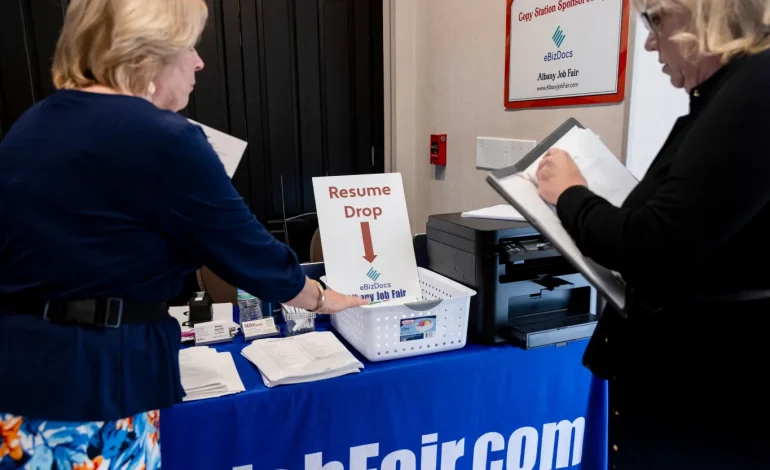The release of the September jobs report is expected to offer insight into the ongoing trends in the US labor market.
Analysts predict that the labor market is continuing its gradual slowdown, with nonfarm payrolls projected to increase by 150,000, slightly up from August’s 142,000. The unemployment rate is anticipated to remain steady at 4.2%.
Wages are also expected to show modest growth, with forecasts suggesting a 0.3% increase month-over-month and a 3.8% rise compared to a year ago. This level of wage growth mirrors that of August and reflects a more balanced dynamic between employers and workers.
“The jobs market is slowing down and becoming less tight,” said Katie Nixon, Chief Investment Officer at Northern Trust Wealth Management.
This could alleviate some inflationary pressures caused by wage increases.
Economists and market observers will be watching the report closely, looking for clues about the Federal Reserve’s next moves on interest rates. A labor market that is not overheating could provide the Fed with the flexibility to continue easing monetary policy without feeling the pressure to aggressively combat inflation.
If the jobs data comes in as expected, it could hit a “sweet spot” for the Federal Reserve, allowing them to lower interest rates more gradually. A stronger-than-expected jobs report, however, might not dramatically change the Fed’s course, but a weaker number could prompt further rate cuts.
“A weak number could tempt them to another 50 basis points,” stated David Kelly, Chief Global Strategist at JPMorgan Asset Management.
There is also the possibility of revisions to previous months’ job numbers, which have sometimes been substantial, adding some unpredictability to the analysis of labor market trends. The report’s data will offer one of the last clean looks at the labor market before the 2024 presidential election, as October’s report could be impacted by the ongoing dockworkers’ strike and weather disruptions.
The broader picture suggests that labor market conditions are softening but not collapsing. While the labor market is far from the high turnover seen during the “Great Resignation,” data shows that job openings have decreased, pushing the ratio of available positions to unemployed workers down from previous highs. This shift reflects a more normalized economy, where job turnover and wage growth are less aggressive.
Some analysts, such as Joseph Brusuelas, Chief Economist at RSM, believe that the current slowdown could be part of a broader trend tied to the US’s aging population and reliance on certain sectors like healthcare and social services for job creation. In the long term, this demographic shift may significantly impact the size of the workforce and economic growth.









